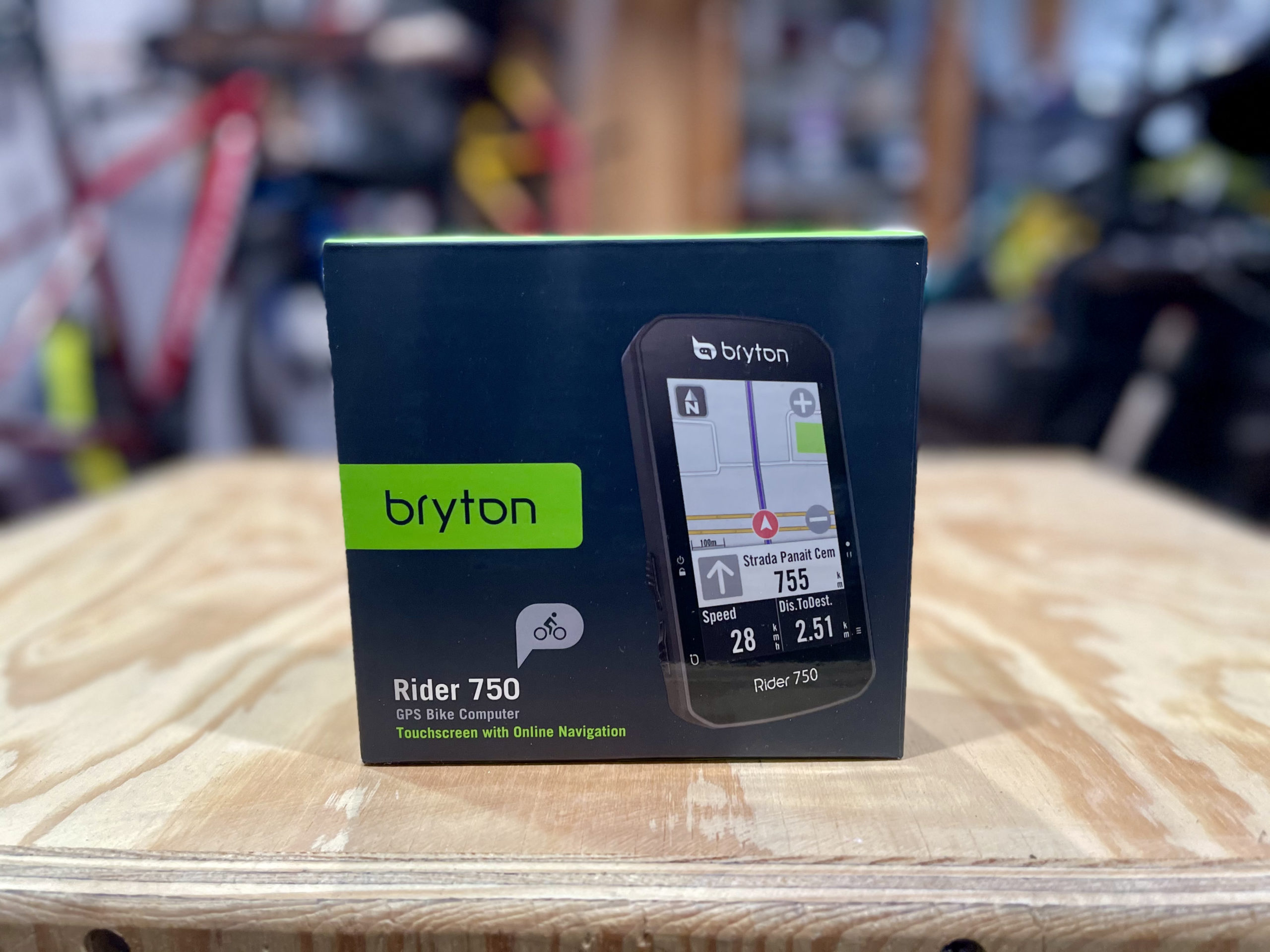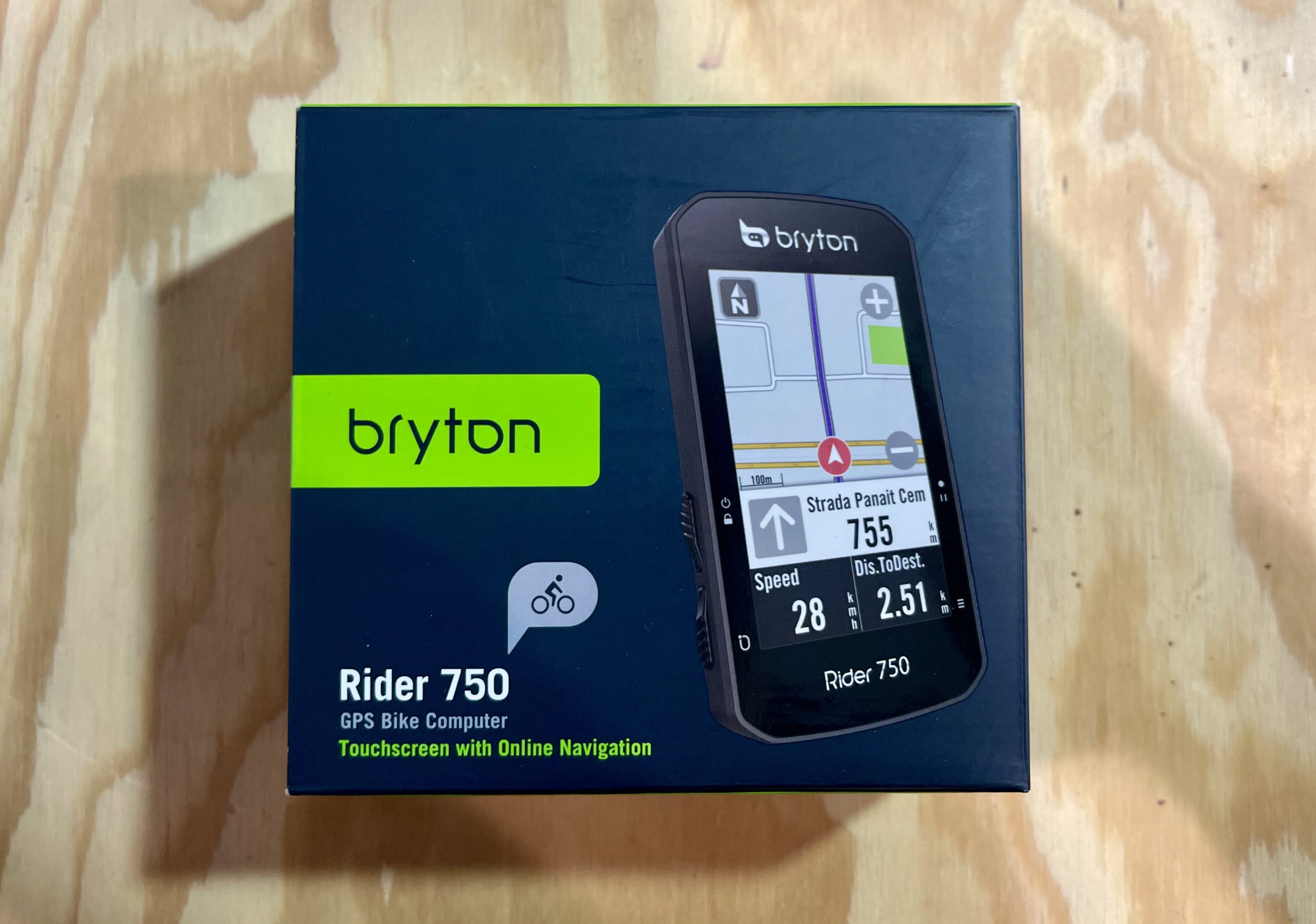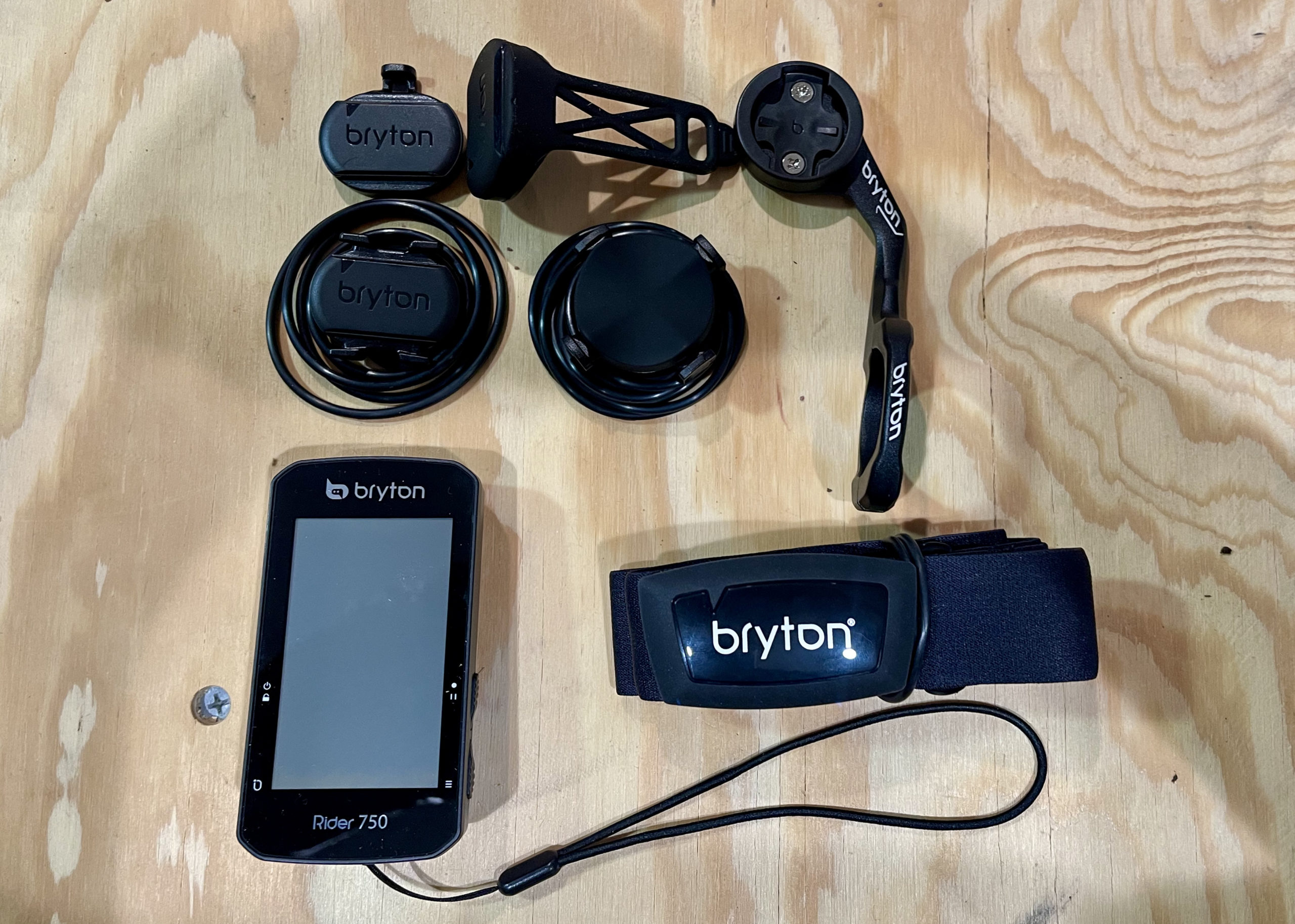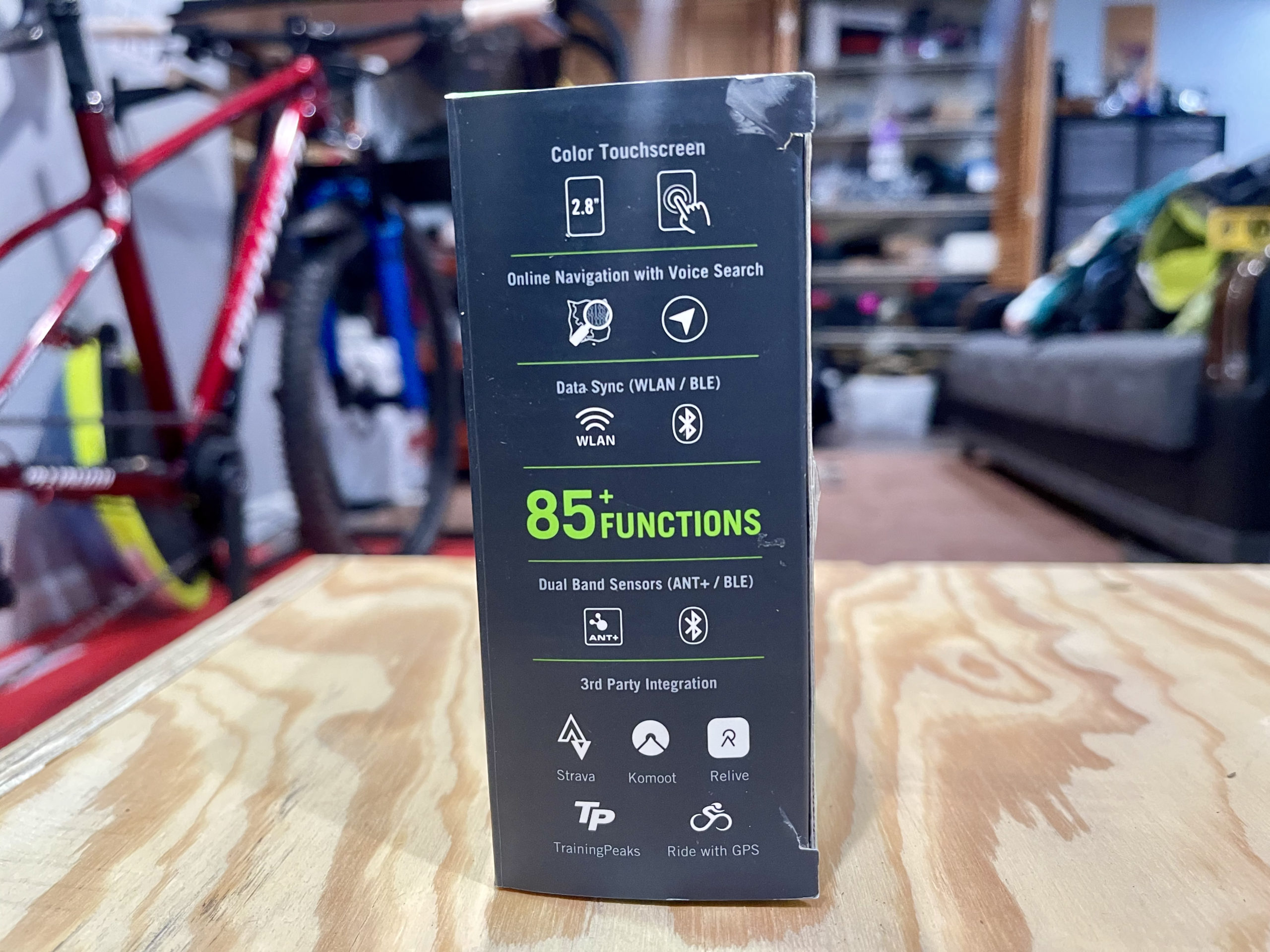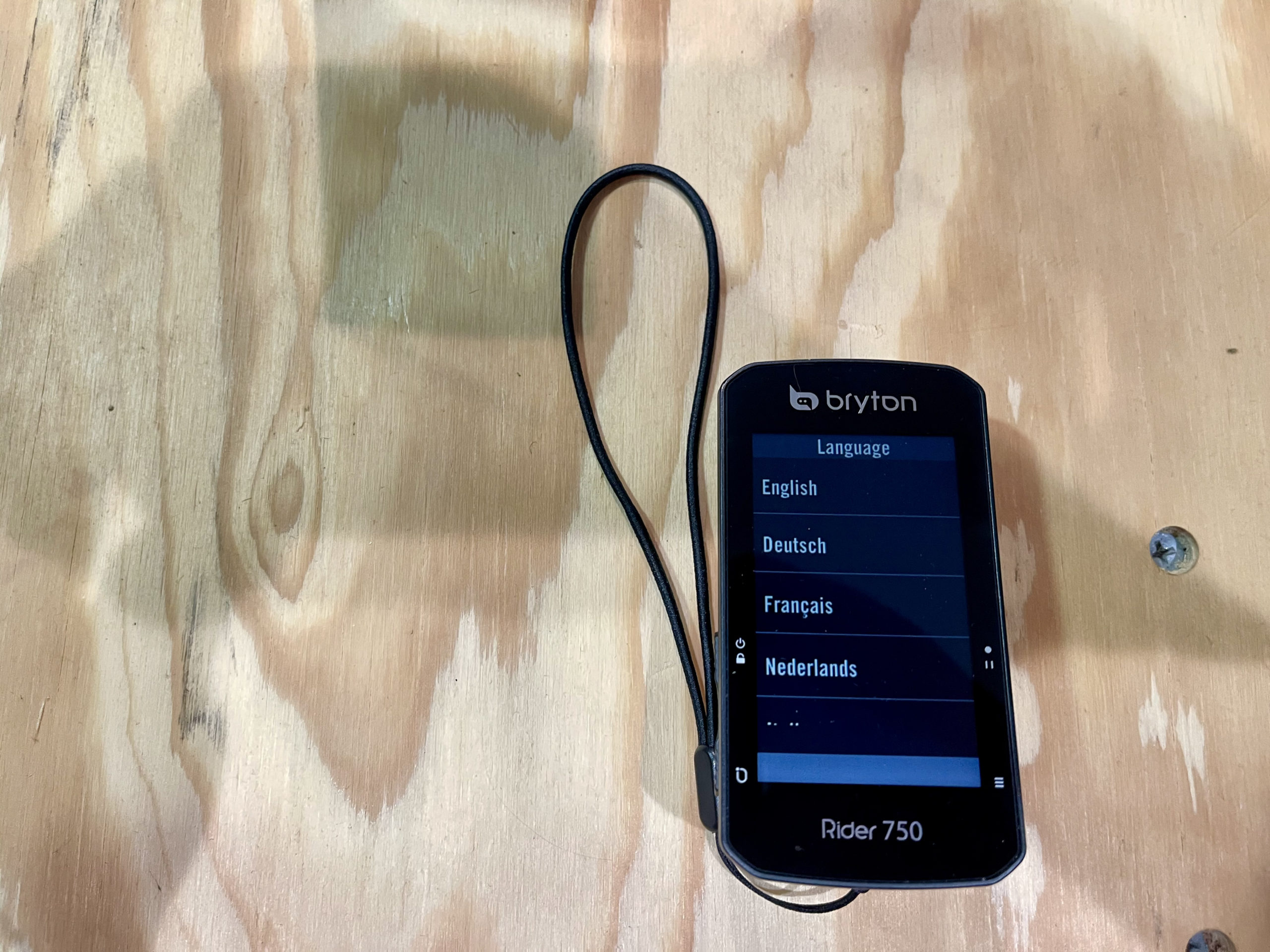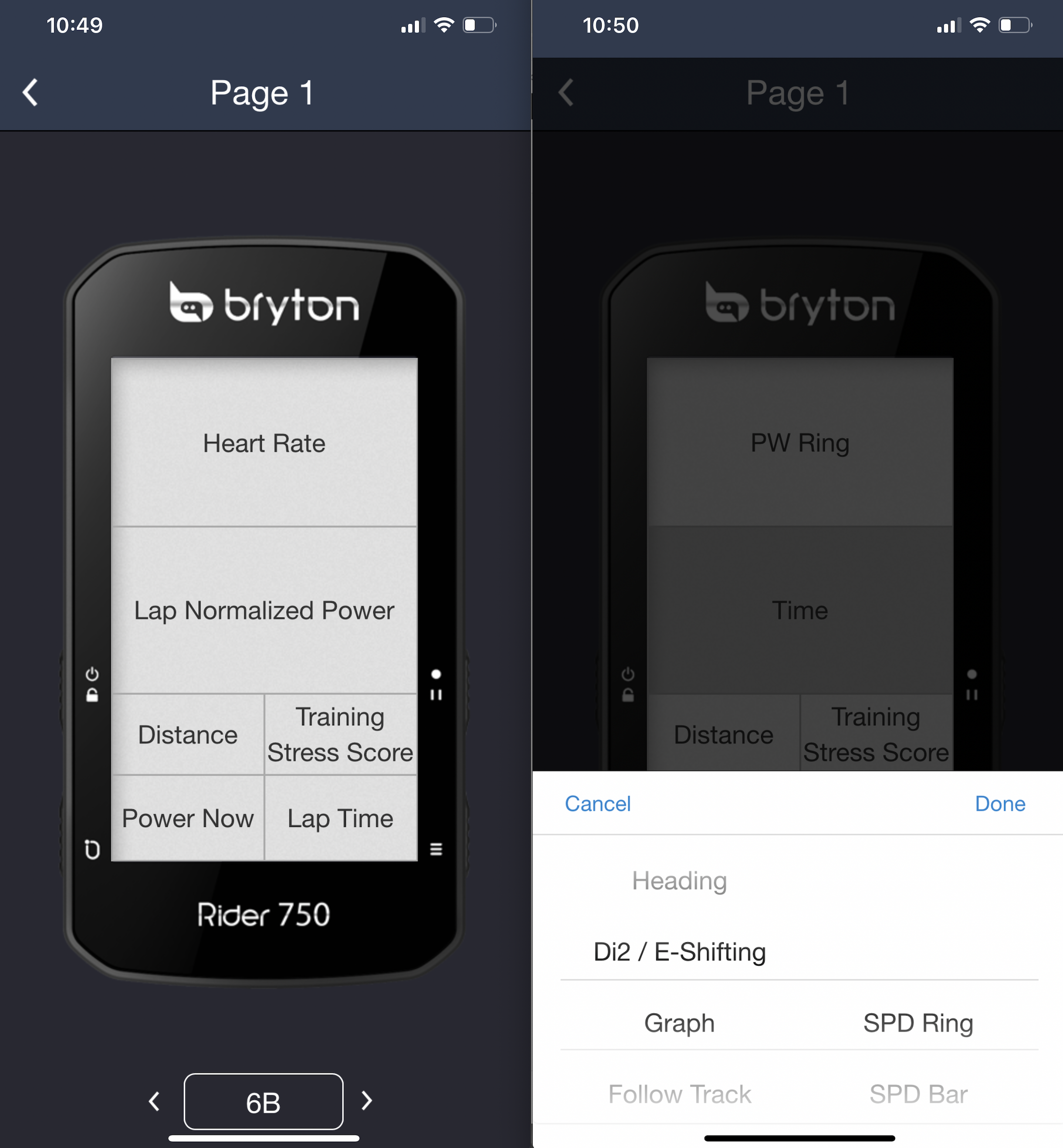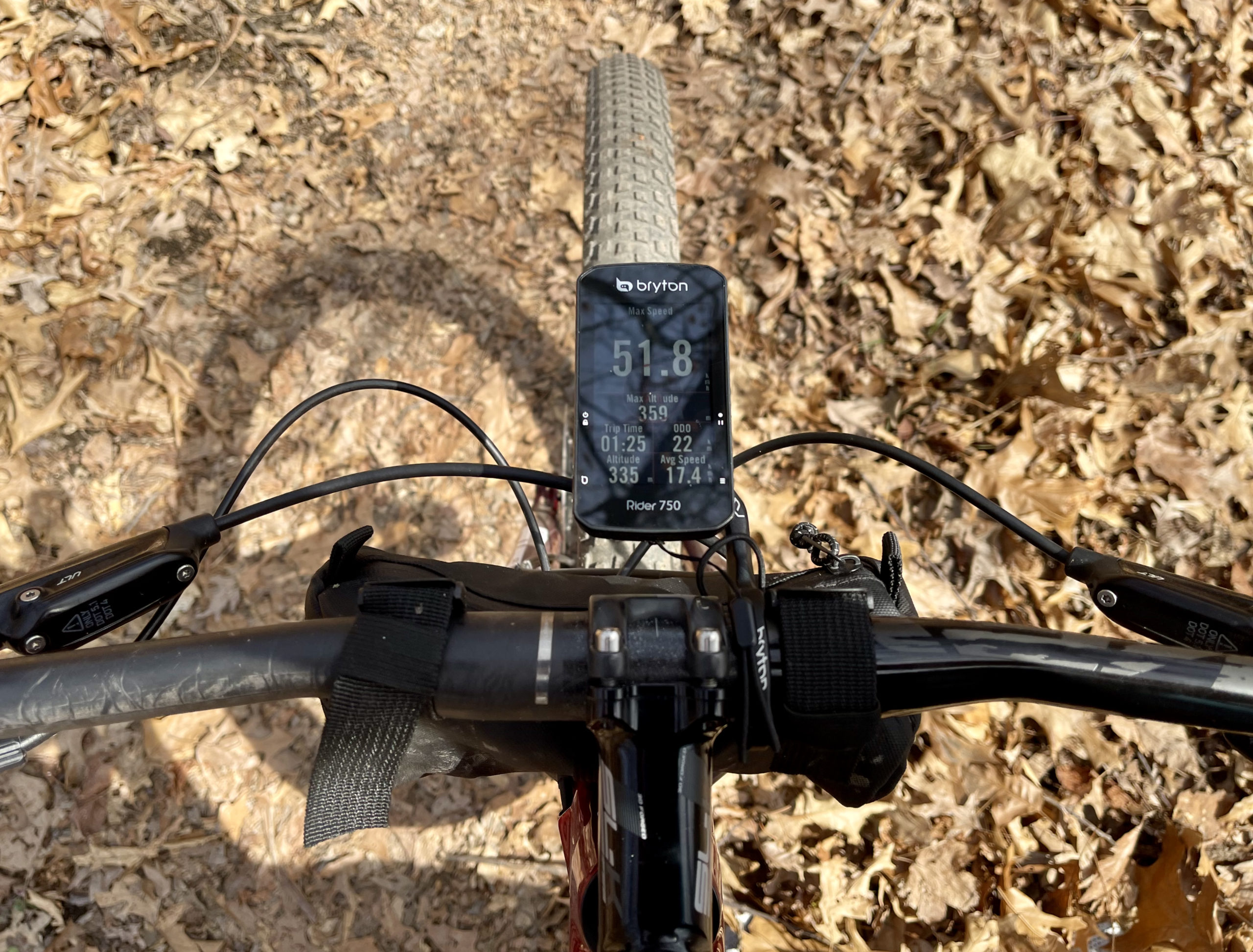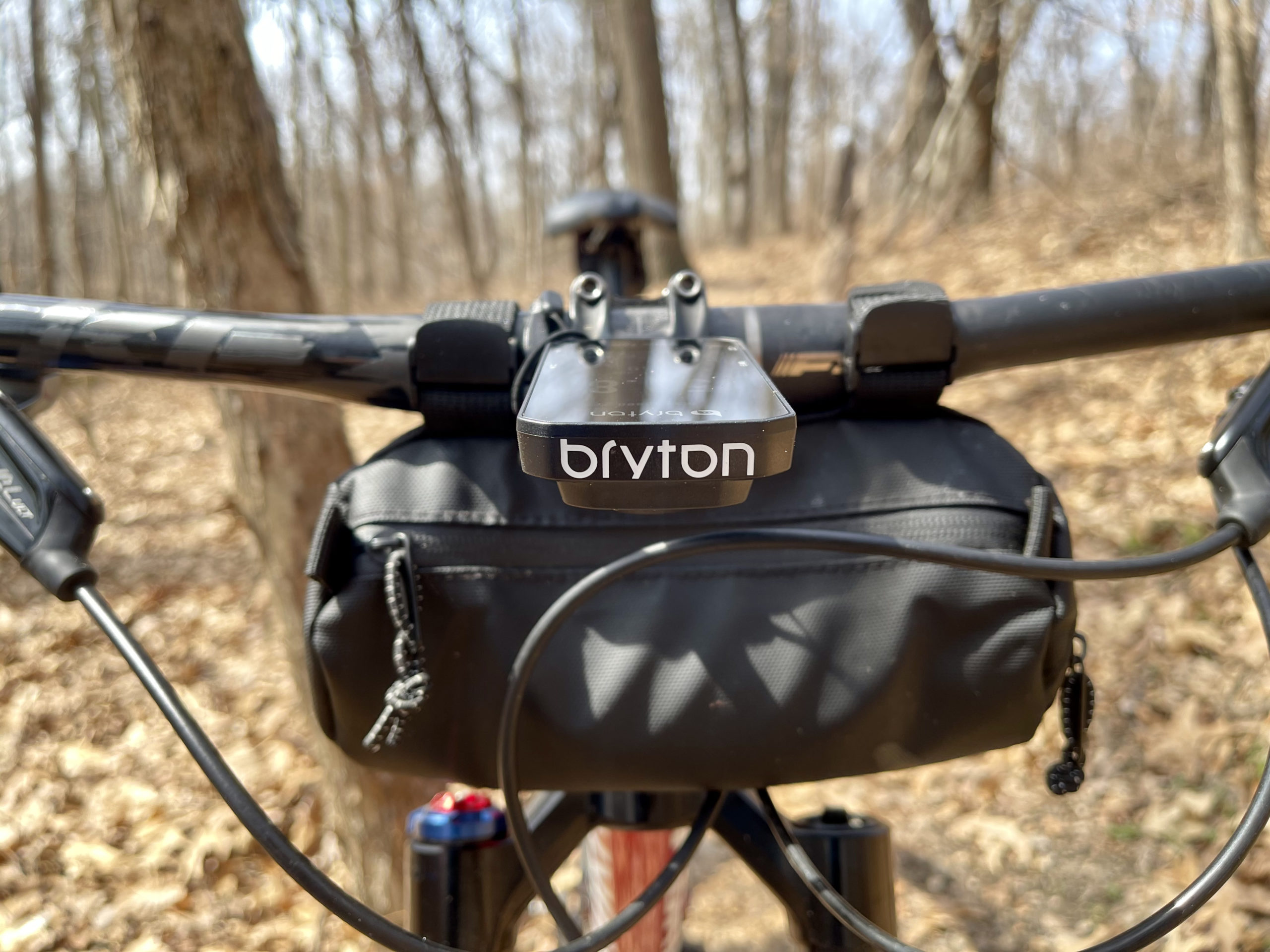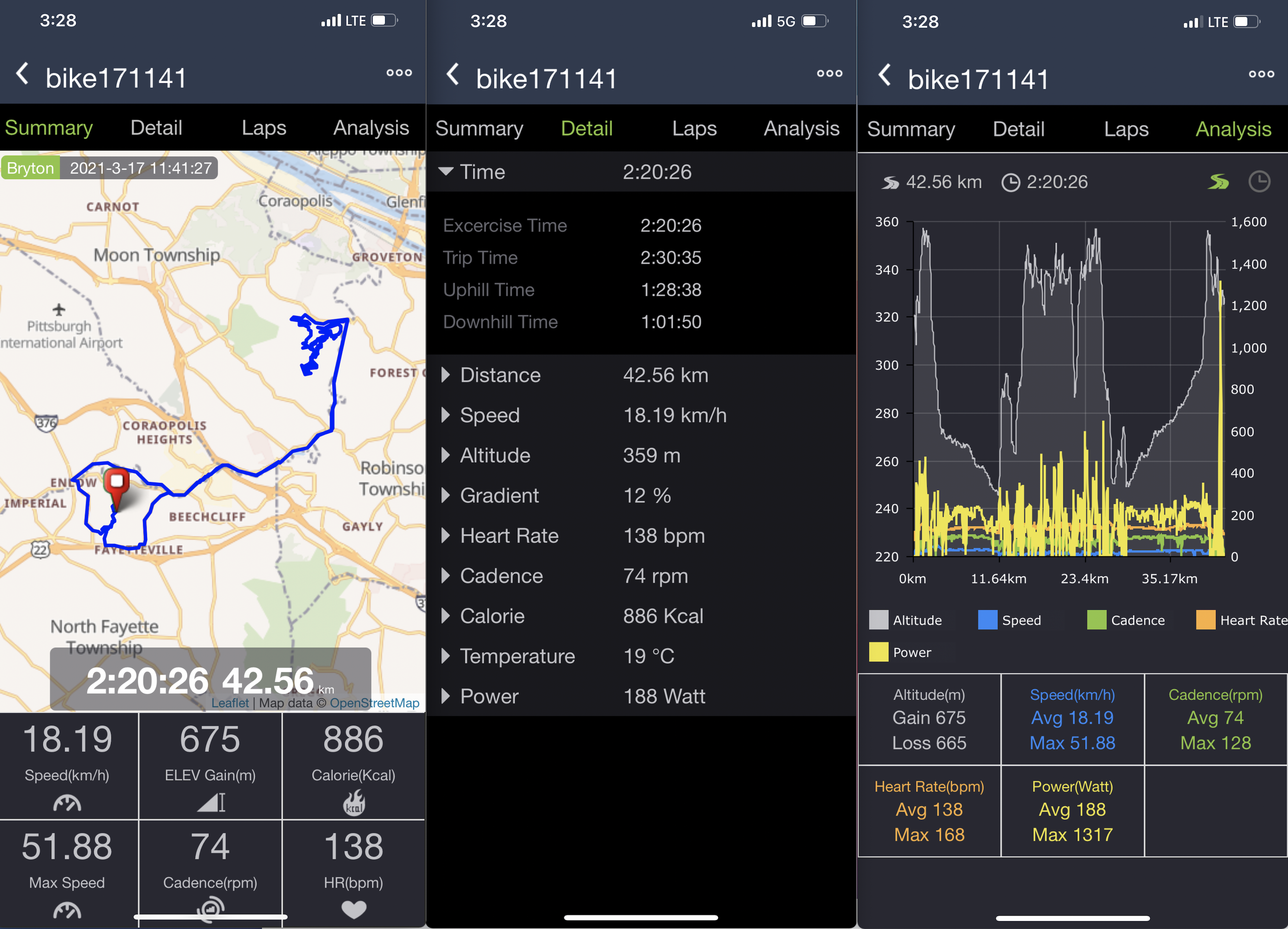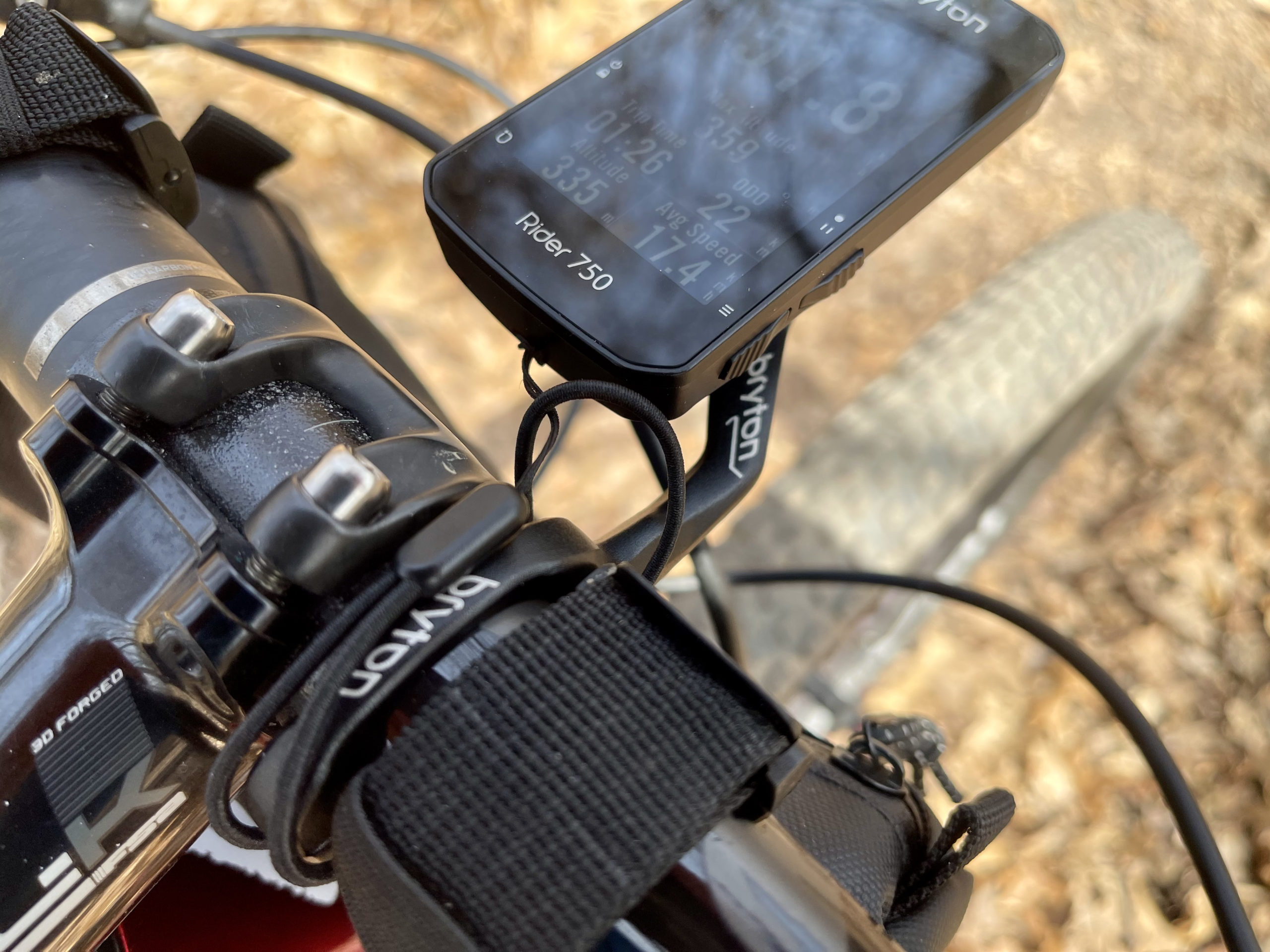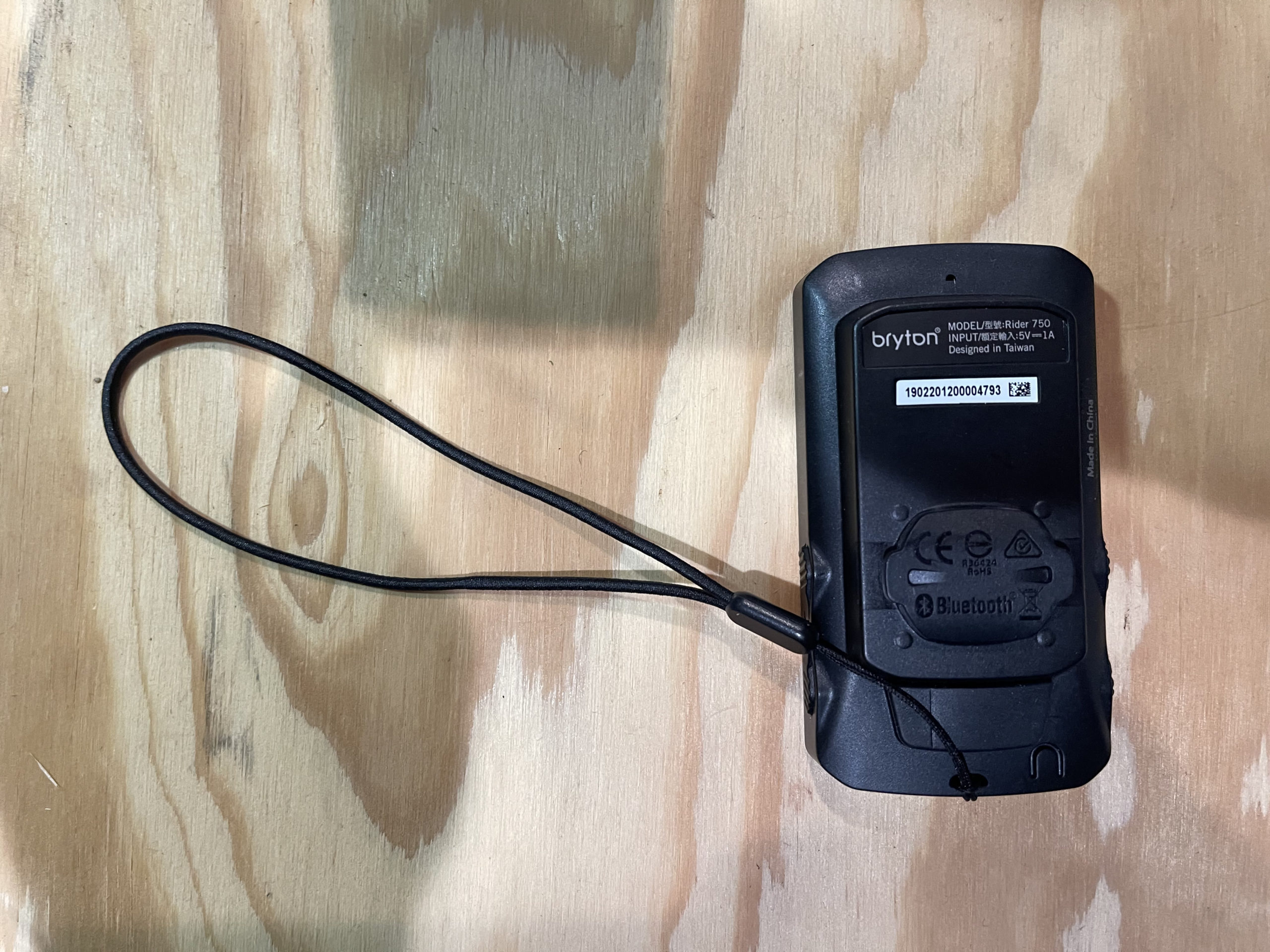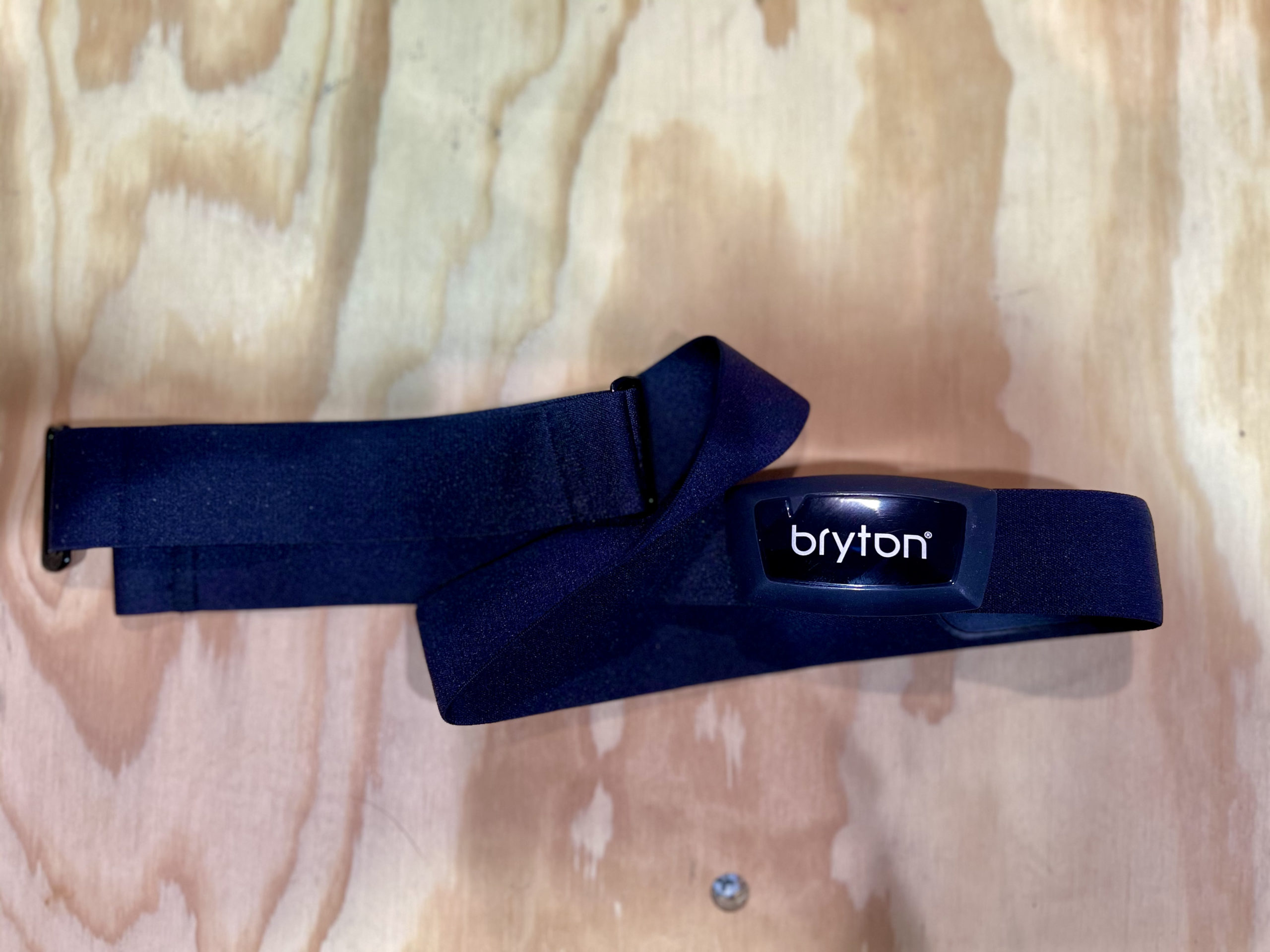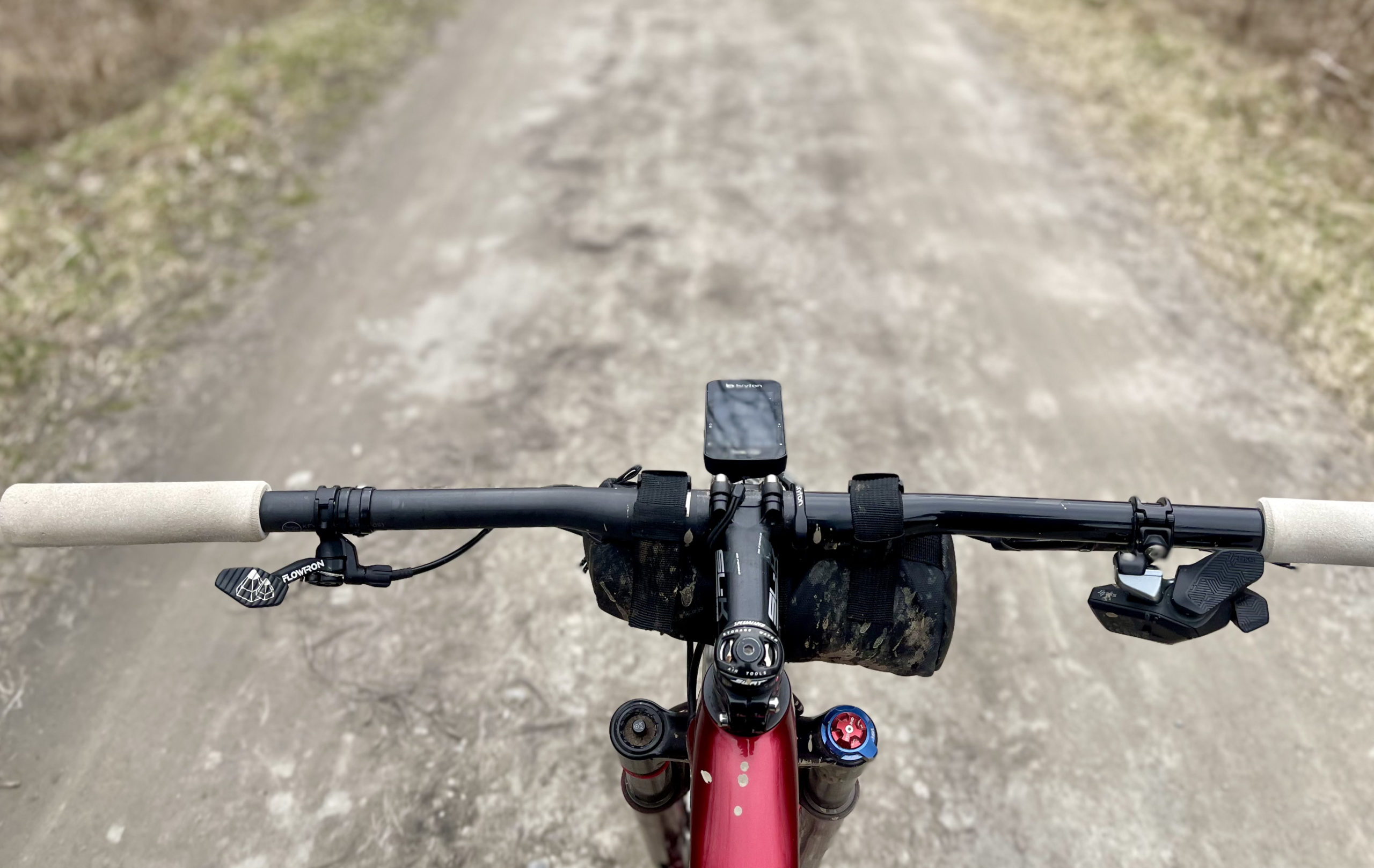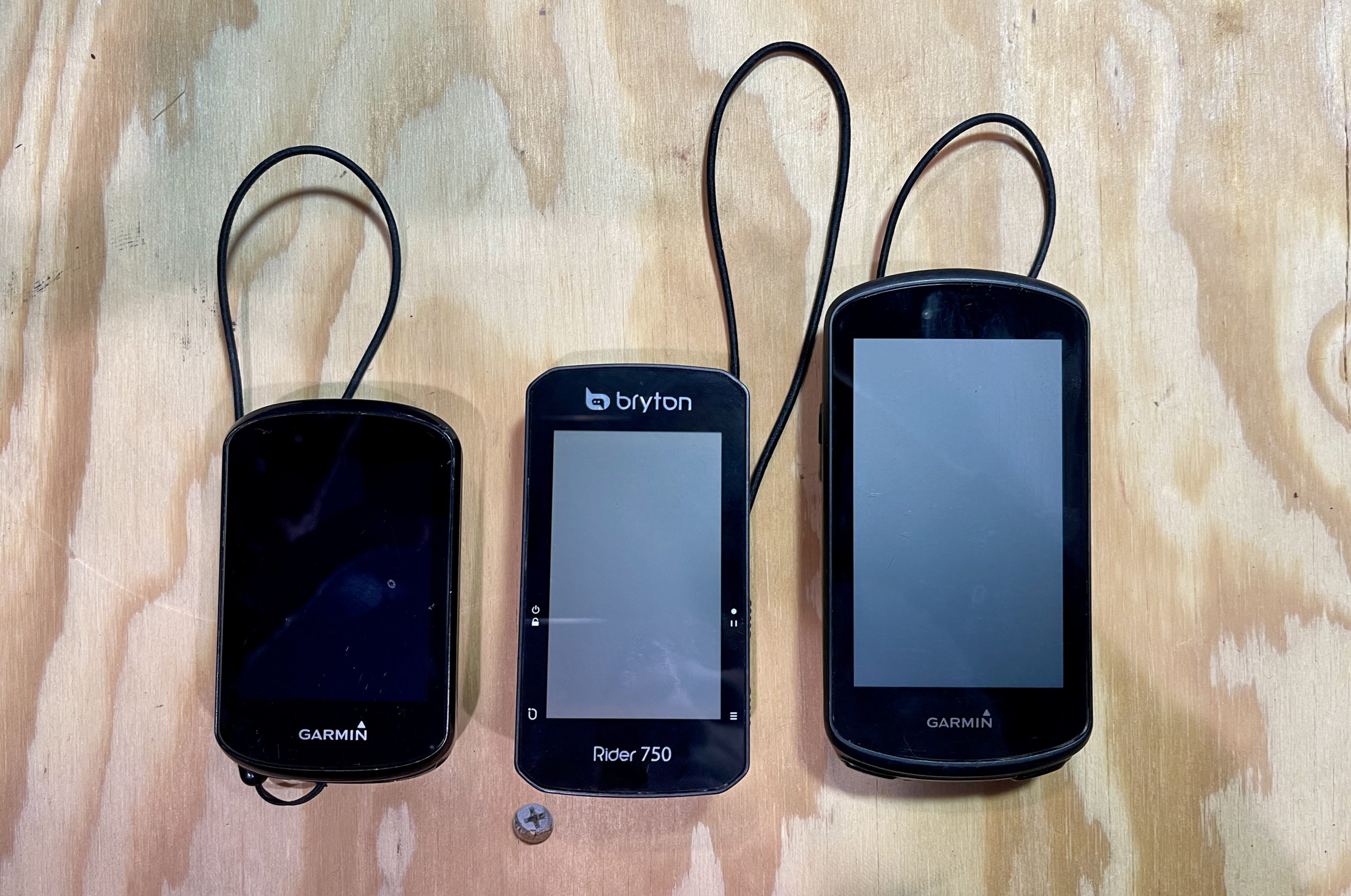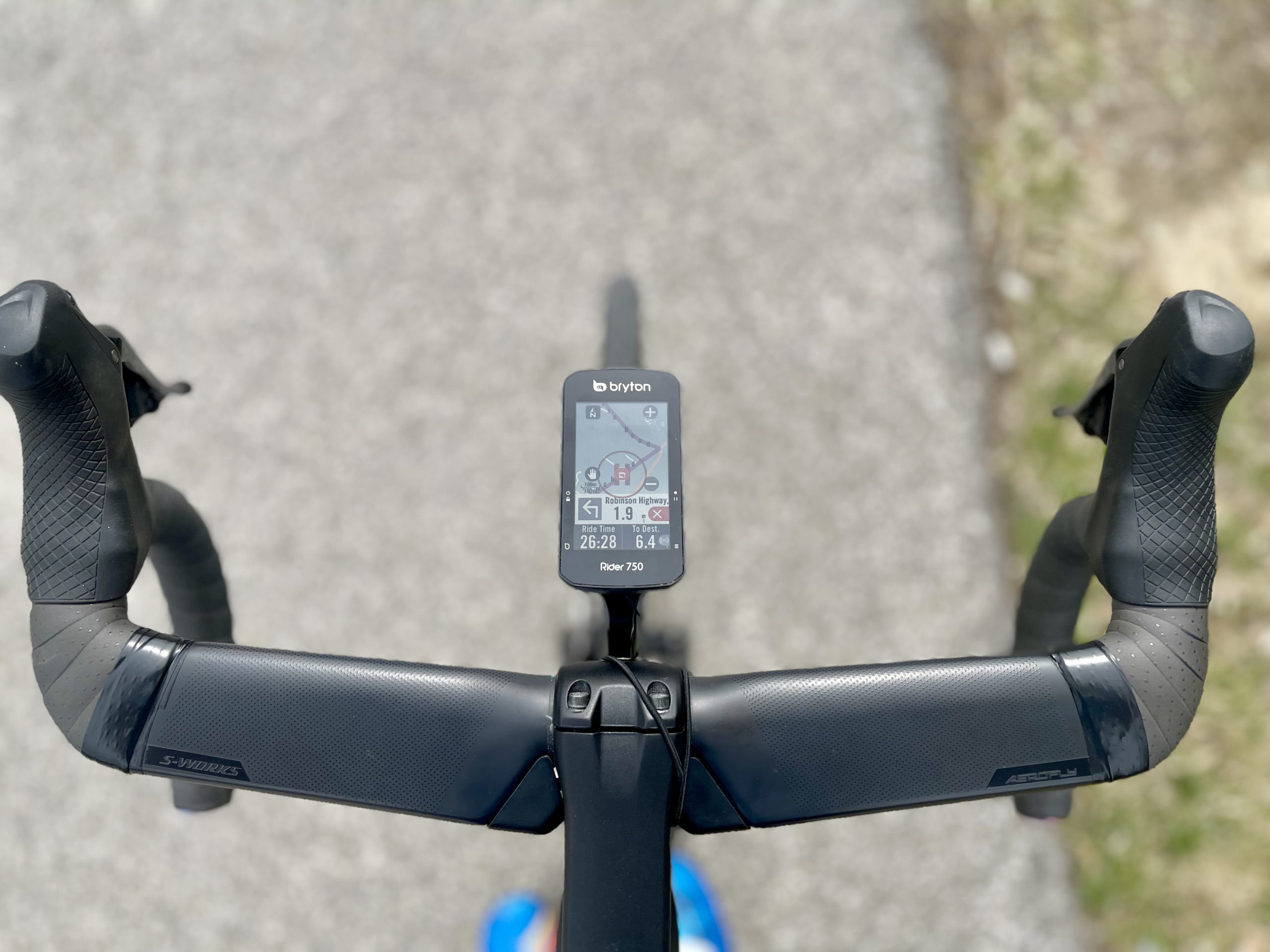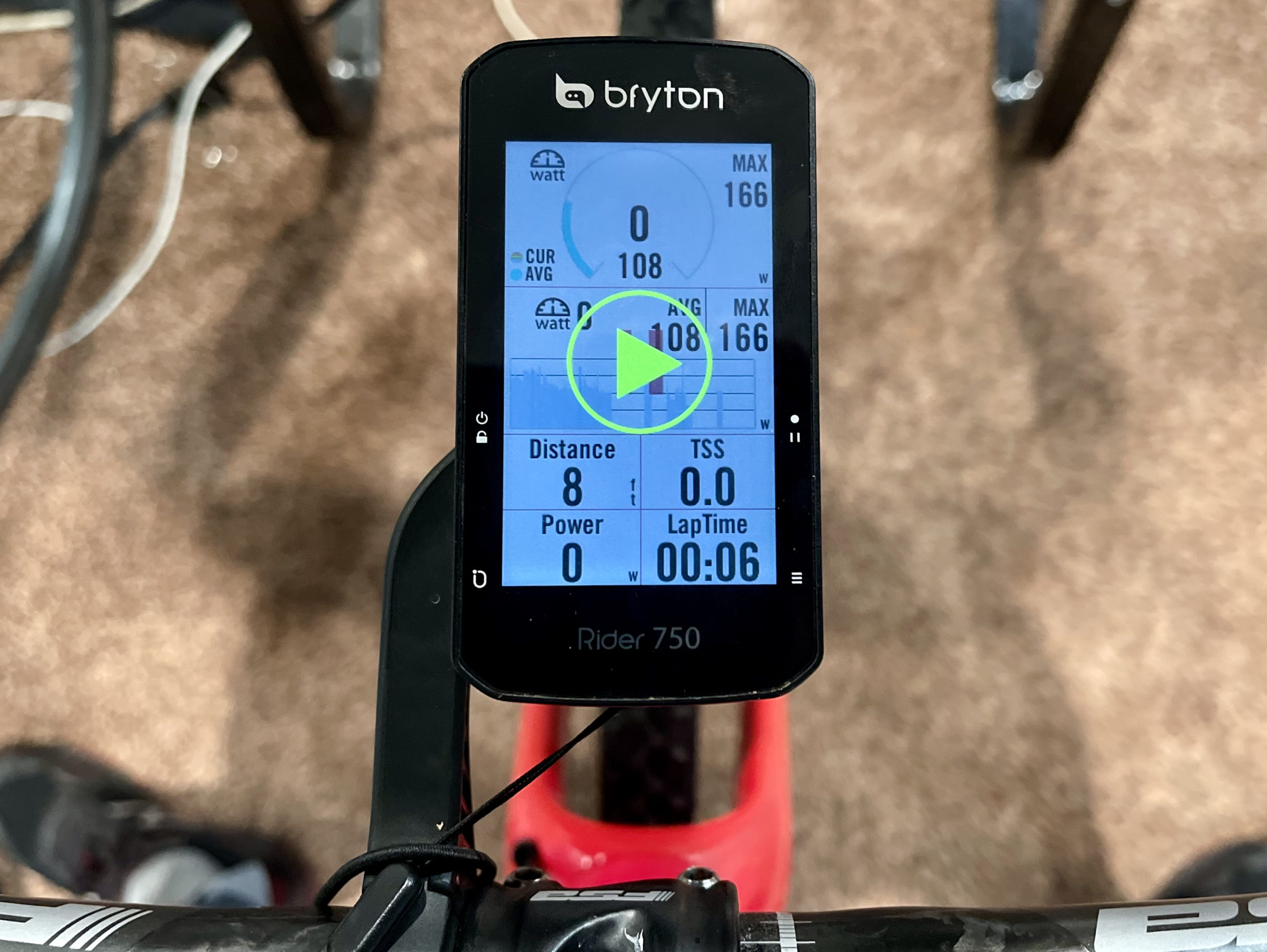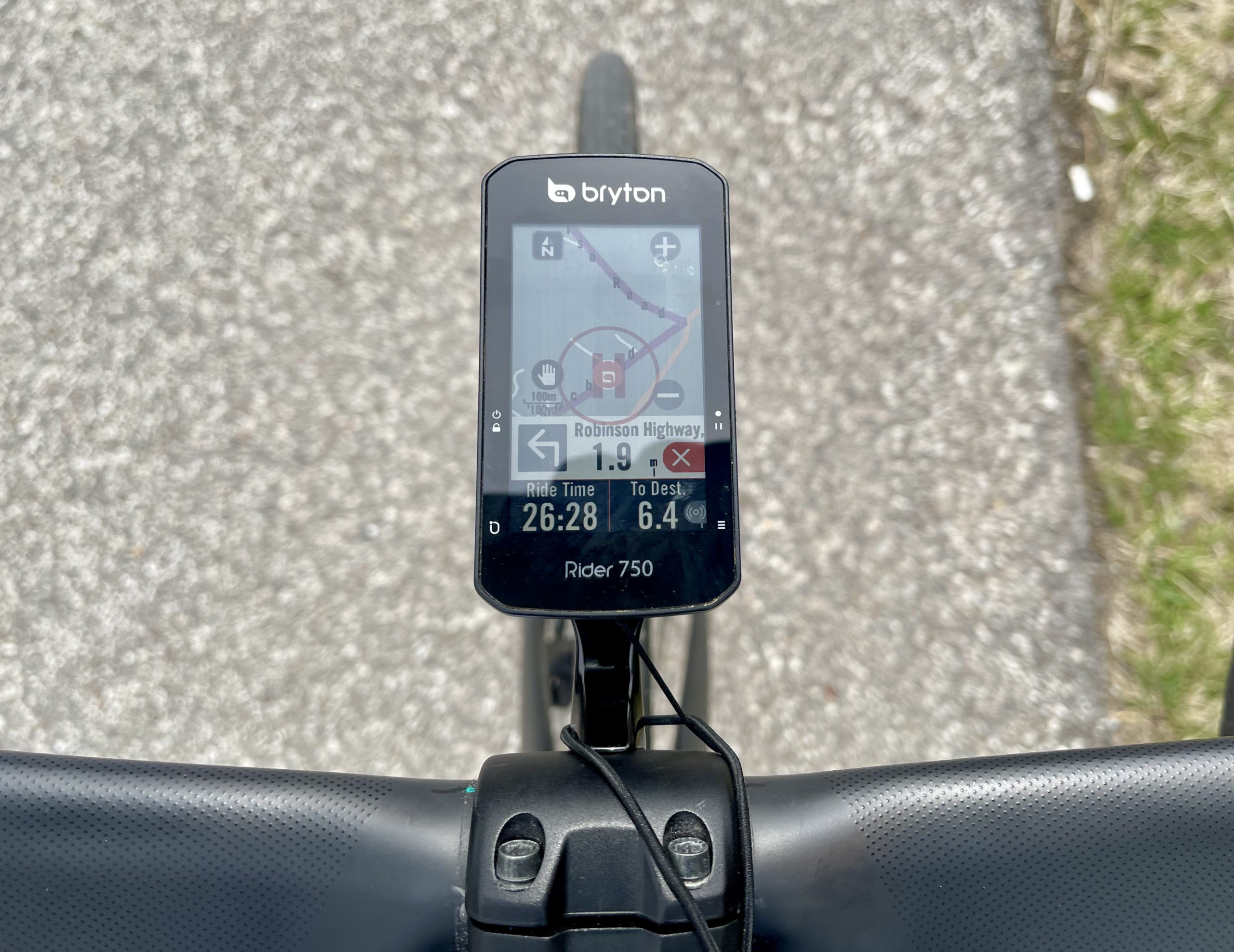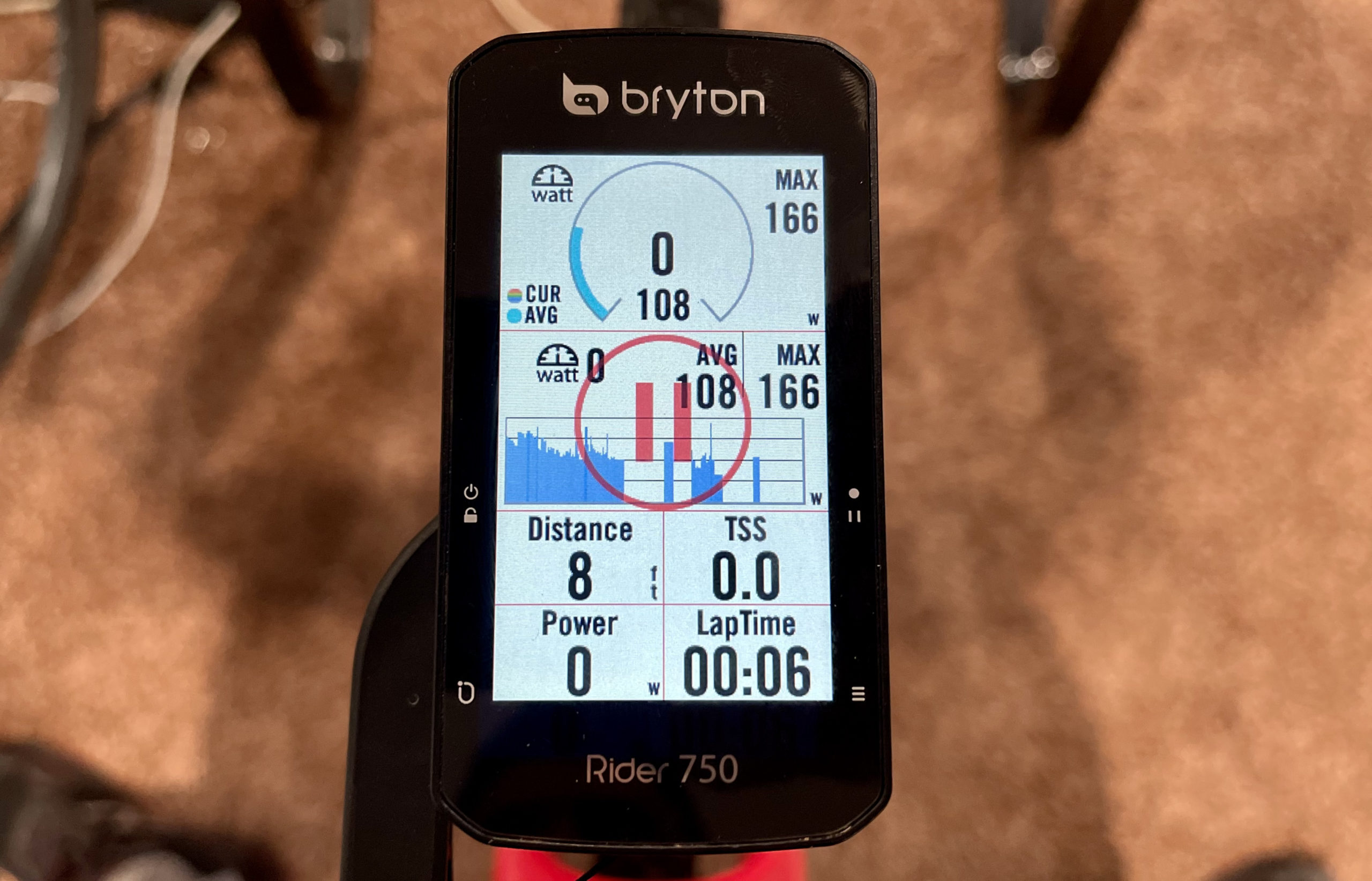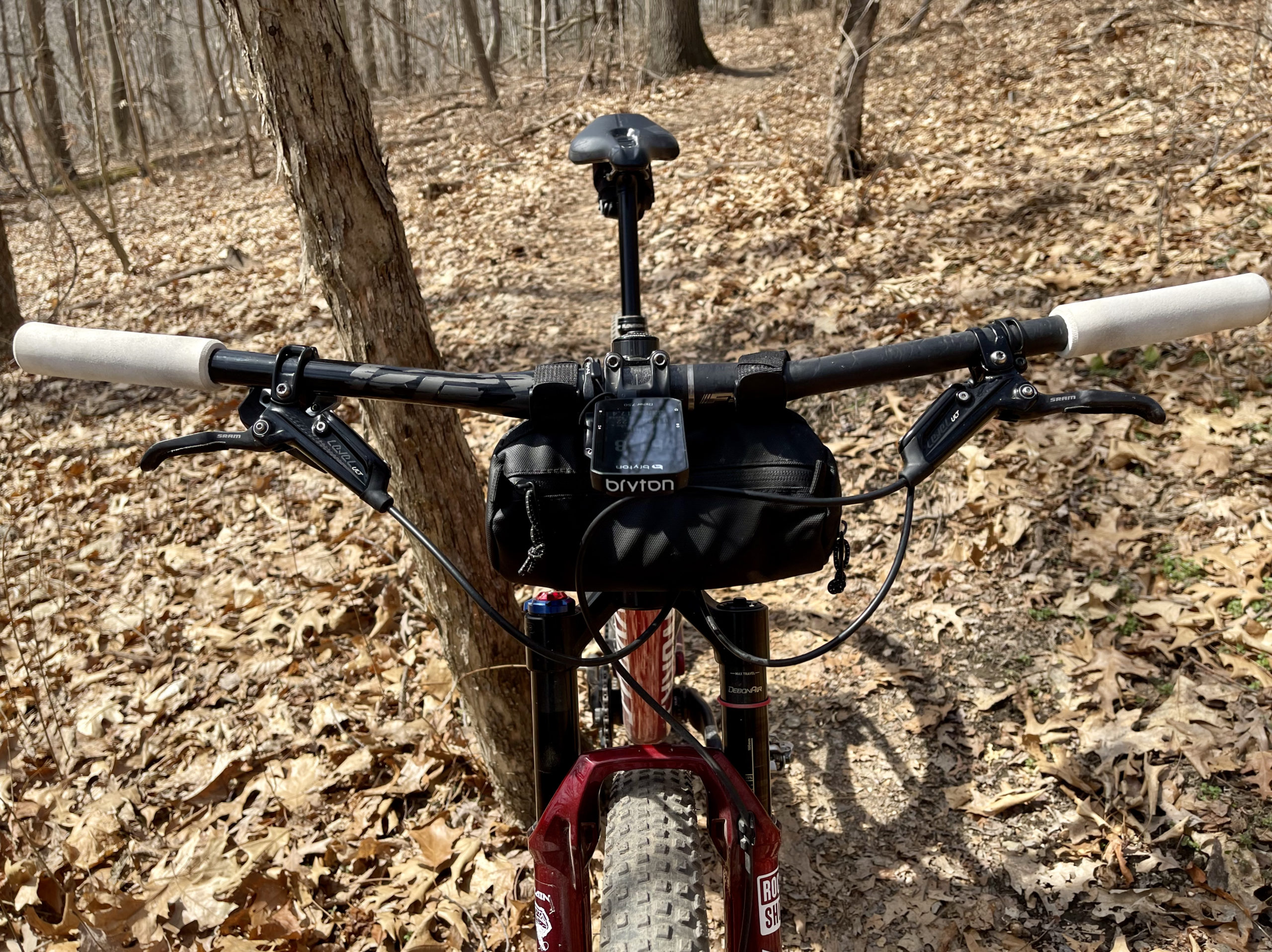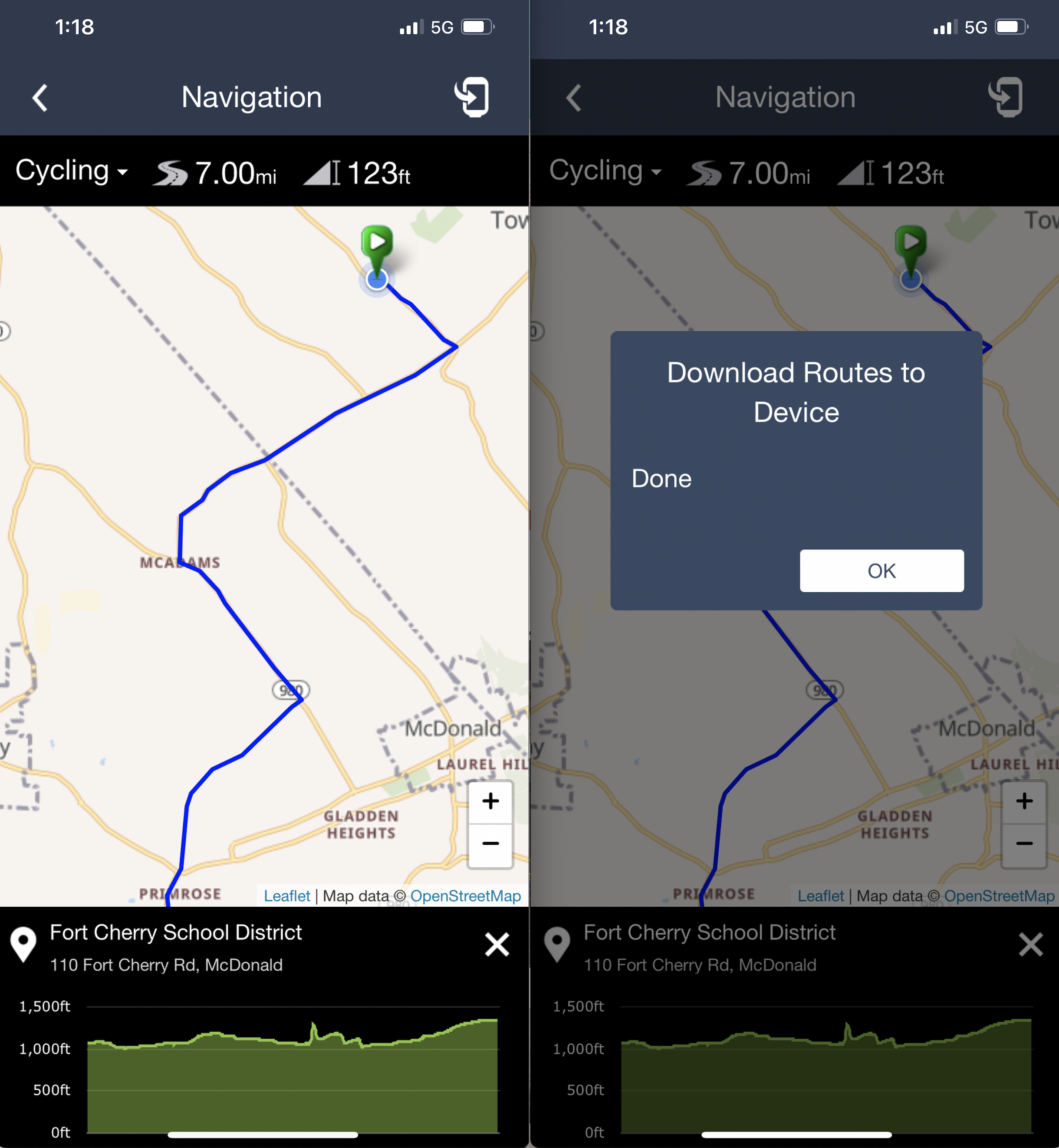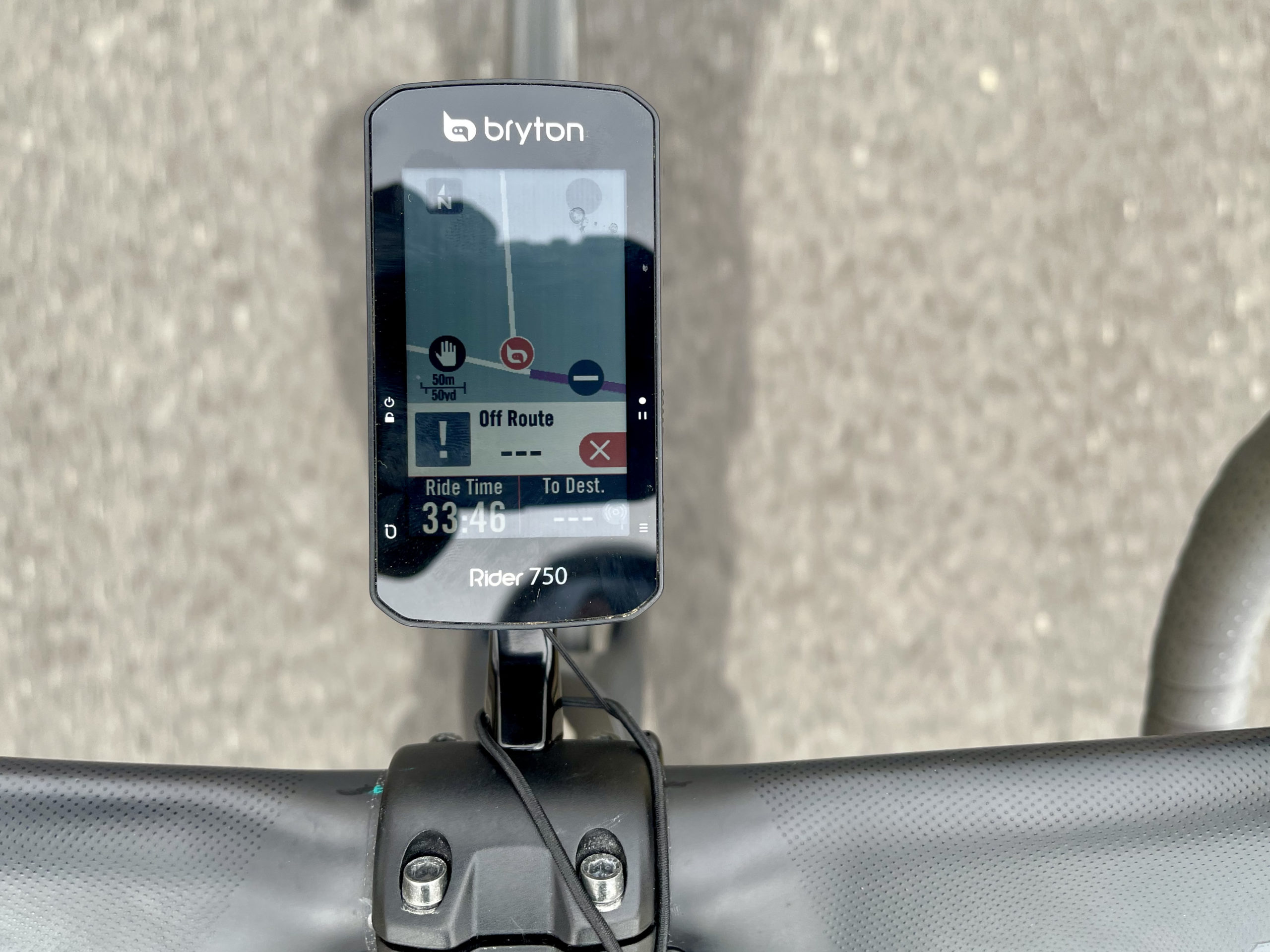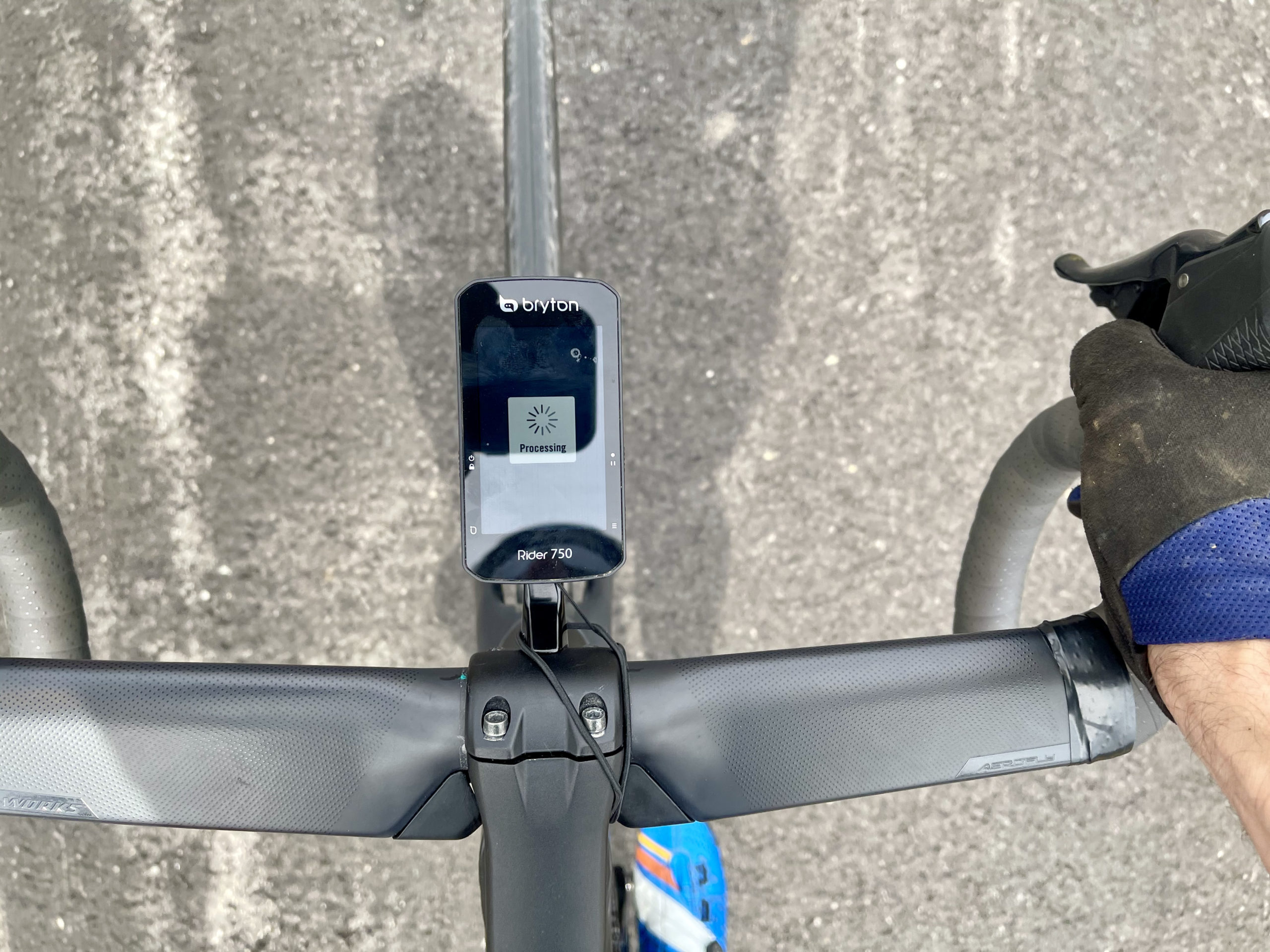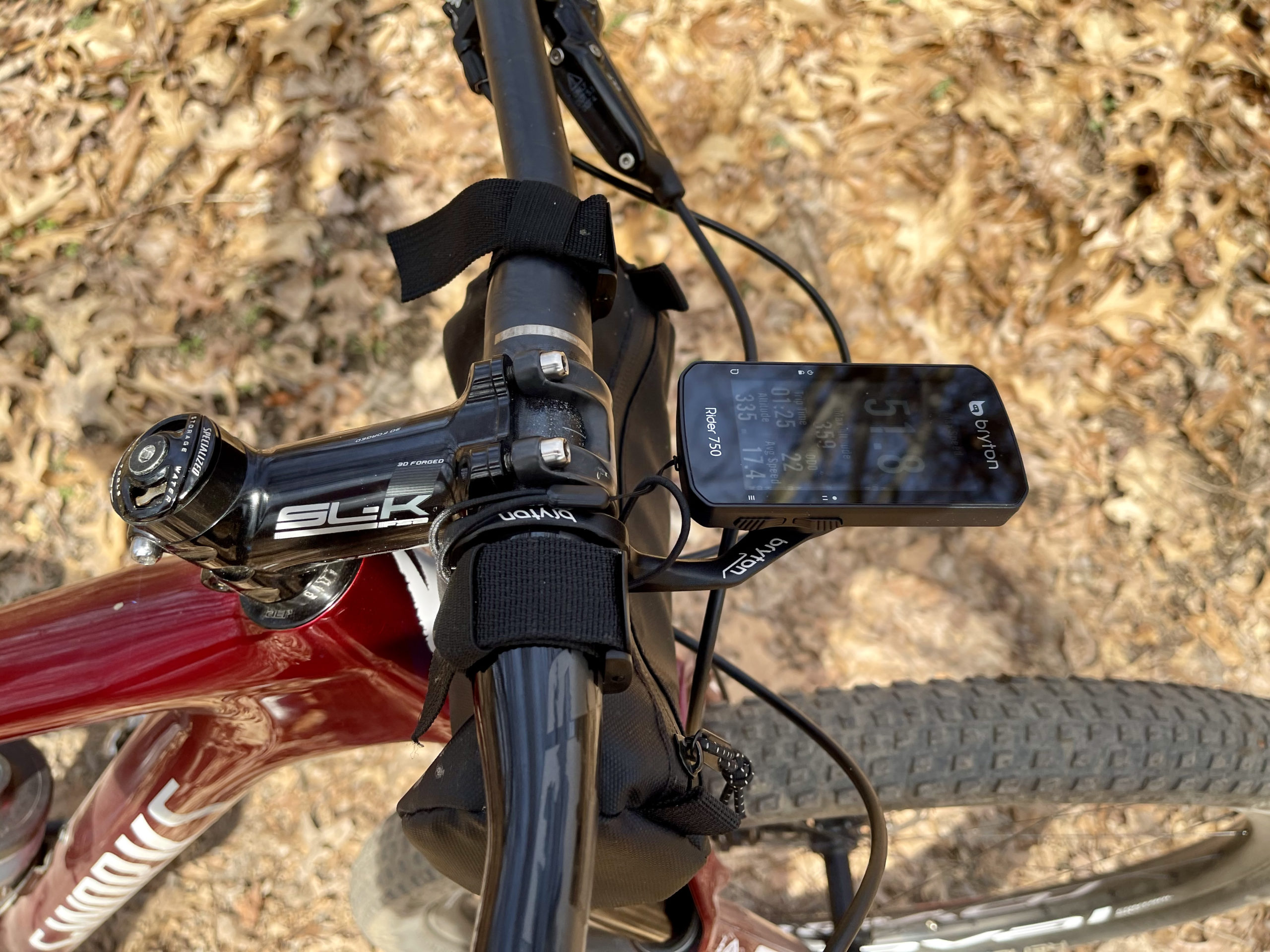For most people in the states, Bryton isn’t a household cycling computer name — but we think that’s about to change. Bryton’s newest head unit, the Bryton Rider 750, comes packed with easy-to-use features, a color touch screen, and a price point nearly two hundred dollars lower than similar units from competitors.
As of 2021, after discontinuing the Rider 850, the Bryton Rider 750 is the Taiwanese company’s flagship head unit. Here’s why you might want it…
What is it?
Designed to directly compete with big names in the cycling computer space, the Bryton Rider 750 has all the trappings of a premier all in one computer companion — and comes outfitted with a 2.8″ color touch screen, online navigation (app integrated) with voice-search, Bluetooth/ANT+ sensors, and Strava integration.
Who is it designed for?
After using the Rider 750 for some time, I can say with confidence that this computer is for anyone who wants to track rides and a ton of metrics. The data collection is top-notch, and the user interface is simple enough to attract both novice and very experienced cyclists. Plus, the price will lure in riders of all kinds.
Bryton Rider 750 key features
- Full color 2.8” touch screen display — resolution: 240 x 400 pixels
- Graphical User Interface (GUI) for tracking progress over interval time
- Programmable workouts via the “Advanced Training” feature of the Bryton Active app
- 12 Customizable data screens
- FTP and MPA prediction
- Built-in Open Street Maps
- Bike radar support with 3rd party devices
- E-Bike support with Shimano Steps including battery life
- Wireless rider transfer via Bluetooth
- 20 hours of battery life
- GPS, Glonass, Galileo, Beidou, QZSS satellite support
- Smart notification for incoming/missed calls, texts, and emails
- Super lightweight at 94 grams
- Price: 750 E $270.00, 750 T $350.00
Available options
The Bryton Rider 750 comes in two package options — the Rider 750 E and the Rider 750 T. The Rider 750 E comes with all the goodies to get you rolling, like a USB cable, two bike mounts, and a safety lanyard, so the unit stays on the bike. The secondary option, which is the 750 T, is the fully-loaded bundle. This package comes with everything in the 750 E option but includes an ANT+/BLE heart rate monitor, ANT+/BLE cadence sensor, and ANT+/BLE hub speed sensor. Both purchase options come with the same Bryton Rider 750 head unit.
Setup and dial-in
Setting up a new computer can be complicated — you have to plug-in data and get the proper screens set up. But with app integration and head units that efficiently communicate with your phone, the bulk of this arduous task is removed.
The Rider 750 is straightforward to set up, and the prompts from the head unit are helpful. I found the Bryton setup video to be super helpful for navigation of the unit itself, and for setting up the Bluetooth. (As a tip from me to you, before you take your new device for a splash in the water, make sure you watch the videos.)
The touch screen works well but is not as responsive as a phone or some competitor head units. But it works well with gloves on, and eventually, you get used to the response time. As for the color — it’s relatively vibrant and easy to read, especially in the GUI mode.
One thing to note is that Bryton uses bits of verbiage that don’t line up with other head units. For example, they use “Results” instead of “Rides,” and MAP instead of FTP — but those are pretty minor things you also get used to.
I received the fully-loaded version of the Rider 750 and was happy to find the sport bike mount is crafted from alloy and uses a similar twist lock to the Garmin units. The Rider 750 works with Garmin-branded mounts, but not the other way around. The Bryton-specific mount with the unit has a very firm hold and a satisfying tick when the unit is in place.
The aluminum mounting clamp is limited to the 31.6mm clamp size, requiring 35mm bar users to look elsewhere.
All sensors that arrive with the fully loaded “T” package are easy to pair with the Rider 750 unit and very easy to install. The hub-style speed sensor is similar to competitors’ offerings and arrives with a durable/flexible rubber band style attachment to fit all manner of hubs. The cadence sensor is very slim, about the size of a crank arm power meter, and comes with a soft rubber backing to stay in place without marking the crankset.
The heart rate sensor is ANT+ Bluetooth compatible with a detachable sensor on the front. Out of all the accessories provided, I was least impressed with the heart rate monitor. The unit itself is very lightweight (not a bad thing), but I feel like it would crack easily. The fit is fine, and it broadcasts well, but the construction isn’t what I would say is on par with competing units.
Ride impressions
My first rides with the Rider 750 were on my mountain bike. I figured I’d be less picky about seeing all my numbers and roll. Looking down at the computer, I was pleased with the size of the screen and visibility — the 2.8″ size is right in between the Garmin 830 plus and the Garmin 1030 plus. This is a great spot to be for mountain biking — you get the visuals without the bulk.
Operating the unit while riding is relatively easy. While the touch screen missed a few swipes, as I adjusted to the screen’s sensitivity, I felt more comfortable with the unit. Plugging in and shuffling around data screens is very intuitive and similar to other units on the market. For on-the-fly changing of the data screen, press down and hold in over the box, and it turns a different color than the others. Touch again and it brings you to a menu to find the data point you’re looking to use. Bryton breaks down the data units so they’re easier to find on the fly (ex, Power – Power 3 sec.).
The unit was a breeze to use on the road, and I found myself favoring it over my bulkier go-to head unit. I set up my road bike under “Bike 2” in the three allotted bikes you can choose. I prefer the “Road – Mountain – Gravel” setup that other manufacturers use, preloaded with data pertinent to those activities. The Rider 750 can make most of those data points, and the user only has to set them up. You can add up to 12 data fields to view on a single page — I found that six was a solid number for me, especially when running the GUI.
Scrolling through the data on my ride was very easy, and I enjoyed the GUI features. My favorite is the volume-style power unit that is super simple and makes it easy to glance down and observe your zone.
The unit works nicely with electronic shifting and many manufacturers. I tested it with FSA WE, Shimano Di2, and SRAM Etap, with all pairing quickly, showing shifts, battery life, and good gearing metrics. The Rider 750 works similarly with E-Bike software, but I didn’t have a chance to check it out.
I took the Rider for a few rides on the trainer, and the unit had zero problems pairing with my Wahoo KICKR. The Rider has a very cool feature of a virtual ride that you’ve performed outside — the unit works with the smart trainer to recreate that specific ride, which is an excellent training tool.
The Rider 750 integrates easily with Radar units like the Garmin Varia Rtl515. Instead of showing dots like the Garmin units, the Rider 750 offers a tiny car, which I like better. The unit beeps when a car is coming and then populates it on the screen, which feels very safe. Unfortunately, the same can not be said for Bluetooth smart lights such as the Bontrager ION Flare 200 series. Other cycling units detect this style of lights easily, but the Rider was never able to find them.
Satellites and navigation
The Bryton picks up a signal fast — it uses GPS, Glonass, Galileo, Beidou, and QZSS satellite support. One of the more remarkable things about the Rider 750 is the navigation. It comes stocked with maps and Open Street Mapping built-in. When used with the Bryton Active App, you can speak into the navigation section and search for your destination. I found this to be very cool and super simple to use. The directions are easy to follow on the fly, and the transfer from phone to unit takes less than 20 seconds.
When navigating to a destination using the Rider 750, I found the unit to be on point with my location and time riding. When I took one of my patented dirt path detours, the maps disagreed and took some time to find updated directions.
When I say some time, I mean a minute or two of a “processing” screen, and then I would hear a little beep indicating when I should turn next.
The map function is straightforward to use while in navigation mode. The unit offers zoom, explore, and other standard options that you would find in a map application on a cell phone.
Final thoughts
The Bryton Rider 750 is quite a cycling computer — jam-packed with tons of tech at a modest price. My only real gripe with the unit is some of the vocabulary used to describe data, but it’s nothing that a user couldn’t get used to. The overall construction is solid and has the makings of a flagship cycling computer. Bryton has big competitors in the US, but with a unit this competent that’s priced so competitively, I can see them converting users fast.
